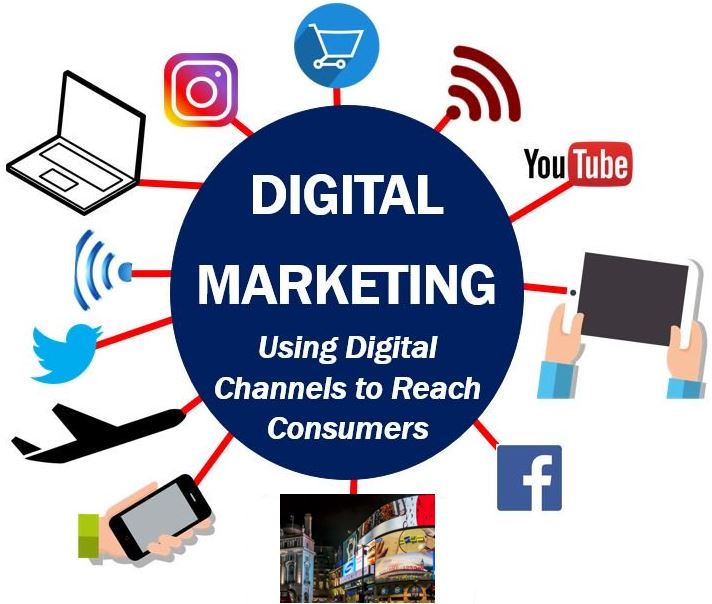Few people could have predicted that in 2020 a global pandemic would affect every aspect of our lives. This is the only occurrence of a contagious disease causing widespread fatalities and serious health issues in living memory, and most industries and economies have been negatively impacted.

We are now at the stage where people have become acclimatized to the uncertainty and the idea that health measures and restrictions will be around for some time to come. Rather than fretting over the potential damages, it is more practical to concentrate on the possible ways of maximizing productivity in reduced circumstances.
With most modern businesses bearing a heavy dependence on tech, remote or on-site assistance from a company who offers managed IT services is a vital asset at all times.
The challenges to digital marketing
Though we have yet to see the long-term economic effects of COVID-19, recessions and job losses have already been prevalent and could be set to continue. Digital marketing is no different and it is usually one of the first areas to get hit by budget cuts. But this is not always the case, and various studies from recent decades have proven that investing in marketing and advertising during a recession helps businesses to recover faster and increase their market share.
For the businesses that have decided to cut back on their digital marketing ventures, the damage may only be realized in the long run. This will be manifested in reduced sales, online traffic, engagement, and falling in the search rankings.
Digital marketing practices take time to build influence and deliver results, and it might be several months before SEO and SEM techniques begin to take effect. In a similar way, failing to keep these practices well-nourished will affect an organization only after some time.
Possible solutions
In markets that are quickly changing, digital marketing assumes the challenge of trying to keep up. Although industries like tourism, hospitality, automotive and luxury goods have been struggling to engage customers, by contrast companies in food delivery, household goods and general merchandise have been inundated with orders. Products may either be sold out or sold at a fraction of their original price. However, on balance spending is down due to job losses and social distancing.
Digital marketers need to be ready for every possible change in the market and adapt accordingly. This means being flexible and developing short-term strategies that can be subject to change at any time, just as governments are attempting to deal with the ongoing health risks. Here is a good article about the paradigm shift in digital marketing for hotels.
Digital marketers should follow their markets closely and look at website metrics, such as user behavior, traffic volume and source, and review the popularity of their products. With these factors taken into account, effective marketing strategies can be developed.
For products that are in demand, extra traffic can be accessed through carefully planned techniques; for products that have lost interest, special offers and discounts will help to improve brand image. Shortly after the onset of the pandemic, Zoom offered more of its videoconferencing services for free, which helped to boost its market share.
Interactive video content like webinars and webcasts have become one of the most popular tools for marketing. Research from Australia has shown a 21 percent year-over-year increase in webinars. It was shown that almost a half of organizations consider webinars to be mostly or highly effective, and especially for lead generation. Eighty percent of organizations found webinars to lower the cost per lead.
Marketers have also found an unexpected opportunity in pay-per-click (PPC) in the coronavirus era, as the amount of advertising on popular channels like Facebook Ads and Google Ads has been reduced. This means the cost-per-click (CPC) is more favorable for the advertiser.
The customer
The disruption to business has caused marketers to be even more concentrated on their sales, as this is the area that is most likely to have suffered. But due to the economic downturn, customers are less likely to be making purchases.
Rather than centering the attention on something that is at a low, marketers could make better use of their time by looking at the source of their sales: their customers. In the current state sales may be down, but without some consideration for client retention there will be less chance for recovery in the future.
This means keeping close connections with your existing customers through social media networks, making sure you keep people aware of your brand, and create a friendly image by engaging with your followers. You can do this by making regular posts and interesting content, listening to other people and responding to their comments.
Although the world has not seen a global pandemic on the same scale for a century, we have been subject to periods of great adversity. Every challenge is a learning opportunity from which we can come back stronger, so digital marketers should use COVID-19 as a chance to review their former practice. In this way the disruption can be used to our advantage and used to usher in a period of improved innovation.
Interesting related article: “What is Online Marketing?”

